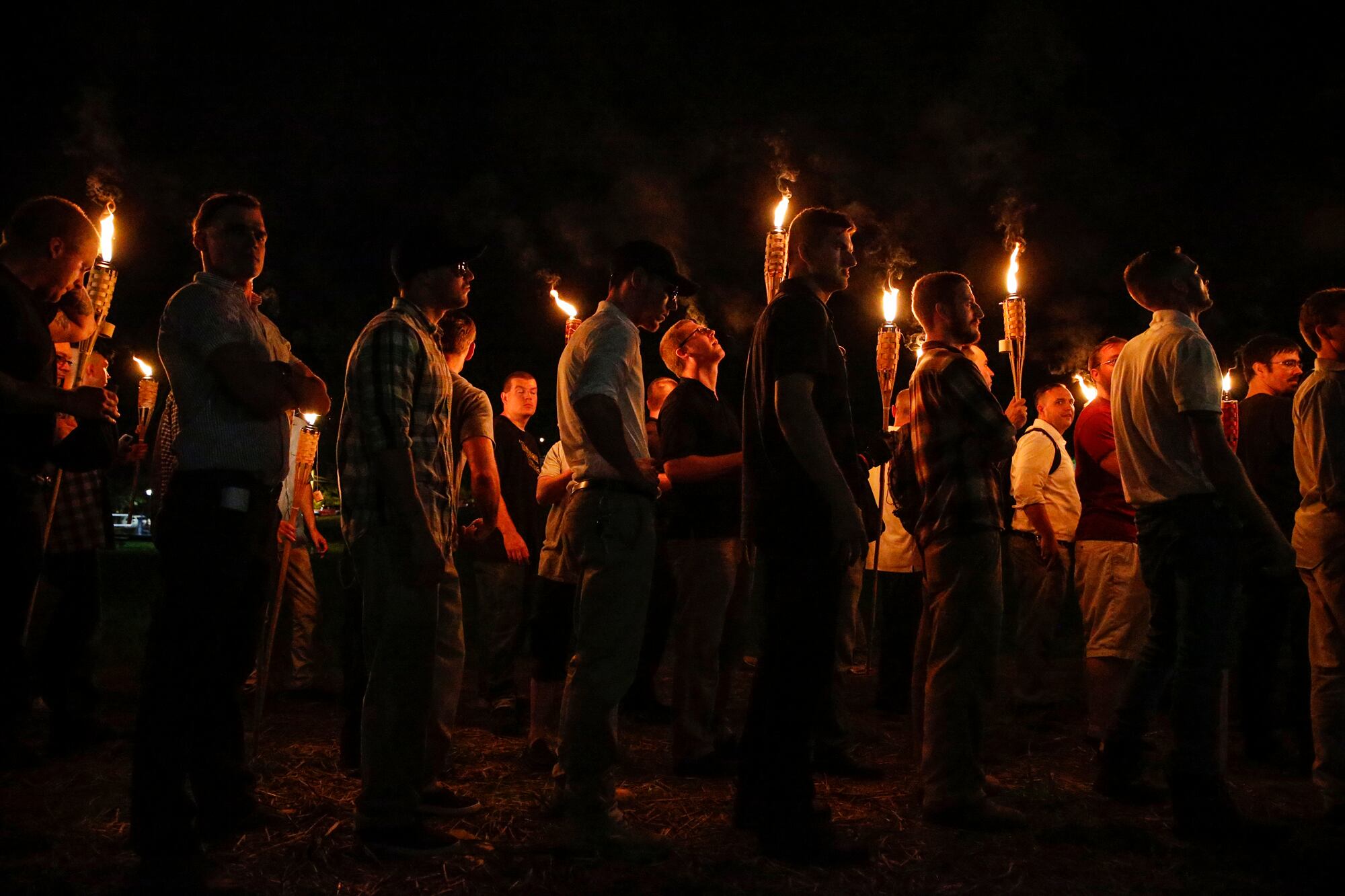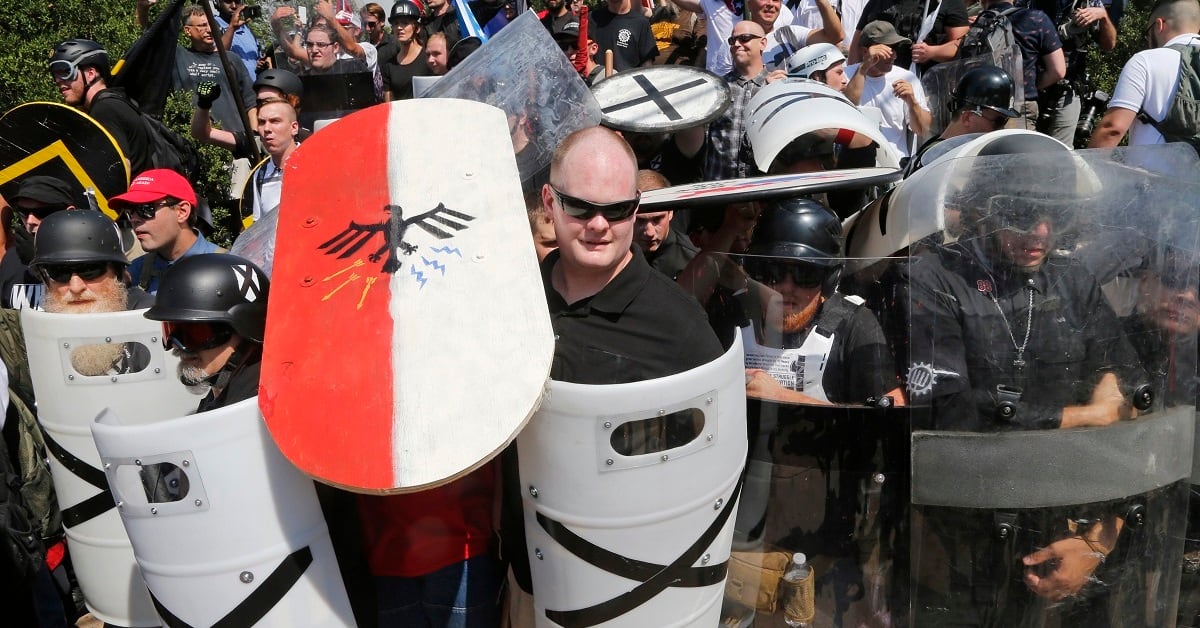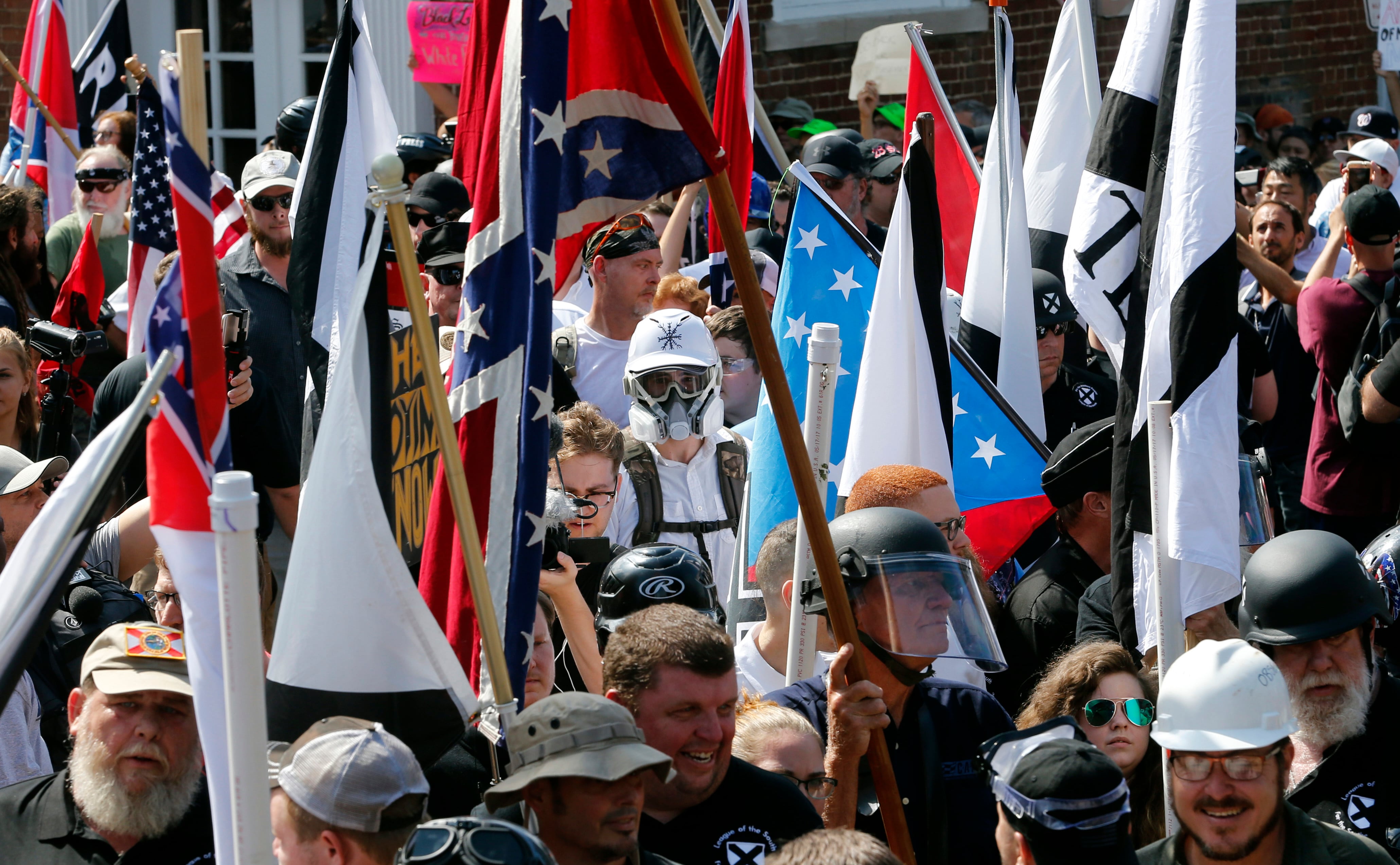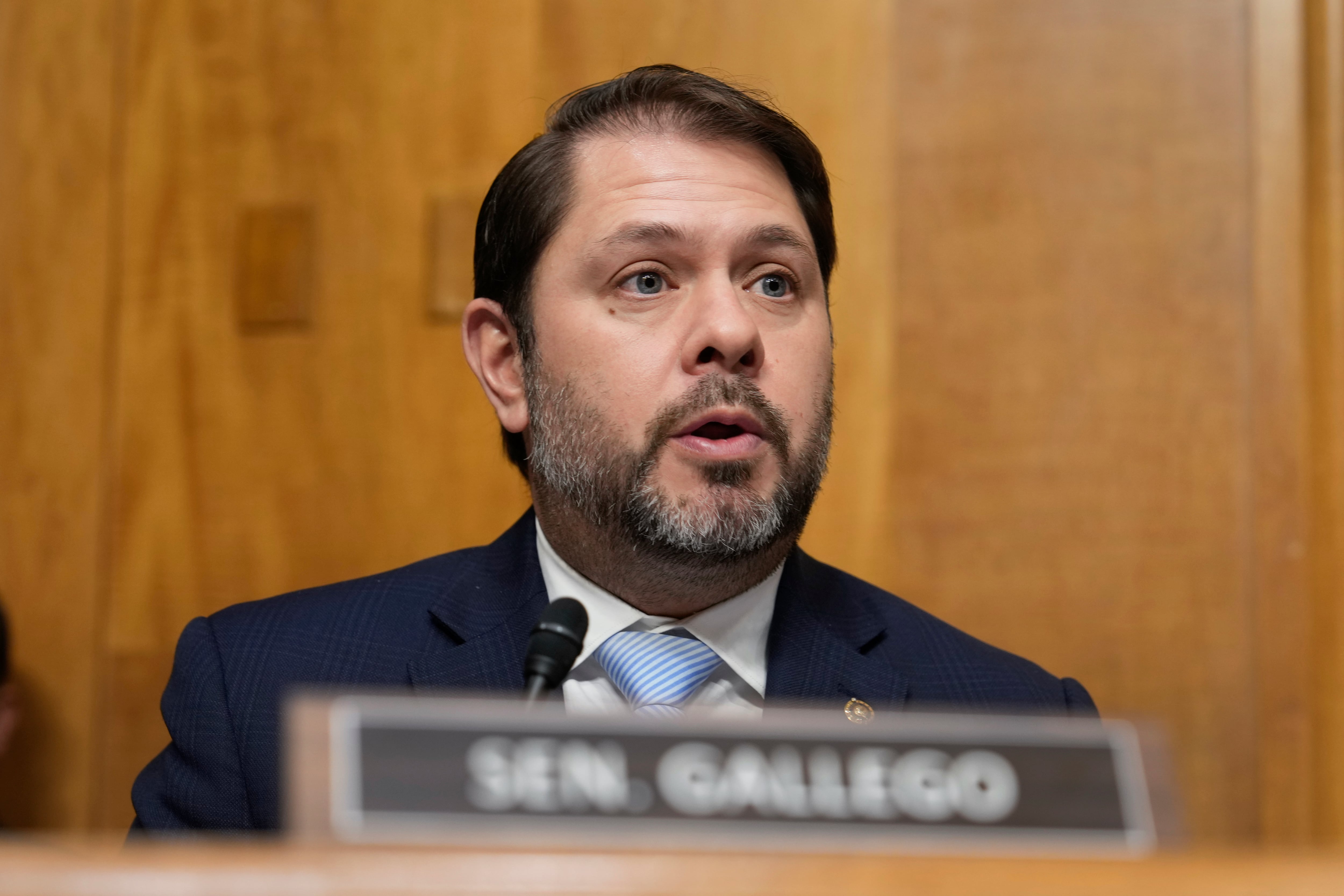The former Marine junior ROTC cadet and North Carolinian was interested in communism and antifa before he joined a neo-Nazi organization known as Atomwaffen Division — an organization described by some as a terror group.
His ideology has drifted across a spectrum of contradictions from antifa — a group whose name stems from “anti-fascists” and is known to use violence against those it deems fascist or supremacist — to a hate group prepping for a race war and the collapse of the U.S. government.
Marine Lance Cpl. Vasillios G. Pistolis ultimately was booted from Corps mid-summer 2018 for his ties to a hate group. But, his ability to enlist in the Corps highlights a challenge to the military recruiters armed with few tools from records checks to interviews to keep supremacists out of the ranks.
An investigation into his hate group ties by Naval Criminal Investigative Service — obtained by Marine Corps Times through a government records request — reads like a psychological evaluation into extremist thought and behavior, detailing his own path to radicalization and views on various hate groups.
RELATED

In June 2018, Pistolis was sentenced before a military court to 28 days confinement, reduction in rank to E-1 and forfeiture of two-thirds pay for one month. He was booted from the Marine Corps in July 2018.
Military officials told Marine Corps Times that Pistolis required no waivers to enlist in the Marine Corps, except a minor medical exception.
Pistolis had no physical paper trail or a criminal background that would connect him to radical groups or extremist ideologies.
That was until a bombshell 2018 ProPublica story exposed his online chat logs and participation in the deadly “Unite the Right” rally in Charlottesville, Virginia, in August 2017.
It was Pistolis’ digital fingerprints that became his downfall, when his commitment to extremist notions was laid bare.
An NCIS cyber review of Pistolis’ confiscated laptop found 279 webpages, 1279 Google searches, 17 videos and six Facebook photos of “evidentiary value,” according to the investigation.
Alarming terms such as “mini 14 supressor,” “balaclava,” “mini 14 anders brevik,” “mini 14 folding stock,” “north hollywood shooters equipment,” “north hollywood shootout museum,” “skull mask,” among others, were found in Pistolis’ search history.
Anders Behring Breivik is a far-right extremist responsible for the July 2011 terror attack in Norway. Breivik killed eight people in a bombing in Oslo and shot up a youth camp on Utoya island, killing 69.
The search term “north Hollywood shooters equipment” may refer to the 1997 shootout between the Los Angeles Police Department and heavily armed bank robbers Larry Phillips Jr. and Emil Mătăsăreanu. The bank robbers were killed in the shootout and 11 police officers were wounded.
Pistolis’ searches on Amazon and eBay showed he was interested in a vintage fiberglass hockey goalie mask, U.S. Army improvised munitions, U.S. explosives demolitions handbooks, an Ak-AKM rifle builders manual, a gun silencer manual and a sports Ruger mini-14 scope mount.
The search terms are troubling, especially in light of a 2008 FBI report that warned of extremist groups infiltrating the U.S. military to exploit training that could help lone wolfs to carry out violent acts.
A report from the Anti-Defamation League said 2018 was the “fourth-deadliest year on record for domestic extremist-related killings since 1970,” in the U.S.
Pistolis’ path to extremism may have started around 2012
Lance Cpl. Vasillios G. Pistolis told investigators that while he was in middle school in Charlotte, North Carolina, he became interested in antifa and communism through a friend.
He said he knew of some Ku Klux Klan members at the time, but his first conversation with a national socialist was through Xbox live — the online video game portal for Microsoft’s Xbox gaming console.
But it wasn’t until President Donald Trump’s election in 2016 when Pistolis began to view communism and antifa as “stupid,” he told investigators.
At a Trump rally at an unknown location in 2016, Pistolis claimed he was assaulted by a member of antifa. This was all before Pistolis joined the Corps.
At that time in his life, Pistolis told investigators that he considered himself a conservative or a patriot, and then drifted toward libertarian views.
While in the Corps, Pistolis started researching the “Unite the Right” movement, fascism, national socialism and National Bolshevism.
He then attended “Unite the Right” rallies in Murfreesboro, Tennessee, and Charlottesville in 2017.
The Charlottesville rally turned deadly when 20-year-old James Alex Fields Jr. drove his car into counterprotestors, killing Heather Heyer.
Fields, who is alleged to have ties with neo-Nazis, was convicted of first-degree murder, among other charges, and was sentenced to life in prison.
Pistolis said he joined Atomwaffen in 2017 for “shock value.” He described the group to investigators as a “prepper group for the collapse of the United States government,” and said that the “government will collapse and there will be World War III.”
The Anti-Defamation League characterizes Atomwaffen as a “small neo-Nazi group whose members are preparing for a race war to combat what they consider the cultural and racial displacement of the white race.”
RELATED

Pistolis said he left Atomwaffen in October 2017, describing the leaders of the group as Satanists who purposely leaked his chat logs to ProPublica.
At an October 2017, “Unite the Right” rally in Tennessee, Pistolis told investigators he met the leader of the Traditionalist Worker Party, or TWP.
The Southern Poverty Law Center described TWP as a “neo-Nazi group that advocates for racially pure nations and communities and blames Jews for many of the world’s problems.”
But Pistolis described himself as a “nationalist” to investigators and that he did not want white supremacy.
He characterized militia groups as “live action players,” called the Three Percenters “f*cking gay,” and said that the Vanguard hate group was “pretty much dead.”
The Three Percenters came out of the 2009 militia resurgence following the election of President Barack Obama, the ADL says. The group believes only 3 percent of colonialist fought against the British during the Revolutionary War.
“Three Percenters view themselves as modern day versions of those revolutionaries, fighting against a tyrannical U.S. government rather than the British,” the ADL website states.
The ADL says that the Vanguard hate group “opposes multiculturalism and believes America should be an exclusively white nation.”
Problems for recruiters
Pistolis’ drift toward extremism was largely hidden in the cyber realm, which creates a vexing problem for the U.S. military and recruiters seeking to block the entrance of supremacists into military.
“The digital footprints afford some of the best insights into whether or not someone is already expressing some kind of commitment to extremist ideology,” John Horgan, a professor at Georgia State University. He is also the author of “The Psychology of Terrorism.”
But, Horgan admits, providing those tools and authorities to the U.S. military to screen potential recruits would raise a number of questions about privacy and freedom of speech.
Marine Corps Recruiting Command says the screening process for “aberrant thinking and behavior” is a “multi-layered” approach that involves police records checks, records of convictions and a signed statement and screening form that addresses gangs and racist or extremist organizations and activities.

Whether those tools are sufficient and whether the military understands the social dynamics and psychology underpinning young Americans’ recruitment into extremist groups is questionable.
Pistolis had no criminal background, his earlier political viewpoints while in school in Charlotte were polar opposites until after Trump’s election. His radicalization process occurred silently online and continued into his entry in the Corps.
“The problem here is that we often place too much emphasis on the ideology, and we think that will tell us something about the motivation,” Horgan said.
“People can become involved in extremism irrespective of what shade it is or ideology,” Horgan explained.
Pistolis’ shift from antifa to a neo-Nazi organization is not surprising to Horgan. He says “extremism is full of contradictions.”
Many extremists are “drifters,” the ideology is often less important than the psychological and social benefits to belonging to a group, according to Horgan.
And “with that comes a pressure to prove oneself” and a “natural eagerness to please, and with the right circumstances that can sometimes result in greater lethality,” Horgan said.
That social and psychological dynamic is valuable to movements like Atomwaffen that may “sense opportunity” from an operational and messaging perspective, Horgan said.
It’s a scenario he says has played out many times, “whether it’s Westerners joining the Taliban or English Protestants joining the IRA [Irish Republican Army].”
“It isn’t always about expressing beliefs,” that often can be faked, Horgan said.
Military accountability
Pistolis’ case is similar to a number of Marines outed in 2018 and 2019 by cyber activists doxing white supremacists’ identities online.
In May, Lance Cpl. Piercy was administratively separated from the Corps for his ties to a hate group, according to Maj. Roger Hollenbeck, a Marine spokesman.
Piercy, who was assigned to 4th Light Armored Reconnaissance Battalion, 4th Marine Division, was under investigation after leaked chat logs tied him to Identity Evropa.
The ADL says Identity Evropa “is a white supremacist group that is focused on the preservation of “white American identity and promoting white European culture.” The ADL also claims the group was founded by Marine veteran Nathan Damigo, who received an other-than-honorable-discharge from the Corps in 2007.
And, in June, the Corps said it was booting out Hawaii-based Lance Cpl. Mason Mead following an investigation into racists posts from the Twitter handle @Jacobite_Edward, which espoused Nazi propaganda. The social media account was alleged to be run by Mead.
These are just a handful of cases during the past couple of years. But, the total number of Marines booted for participation in hate groups over any stretch of time is difficult to nail down.
The only data available comes from a letter dated Aug. 24, 2018, from the Pentagon addressed to then-Rep. Keith Ellison, D-Minn.

According to the letter, obtained by Marine Corps Times, there have been 27 reports of extremist activity by service members over the past five years, and 18 of those service members were “ultimately disciplined and/or separated” from the military.
Ellison requested the data from the Pentagon on U.S. service member participation in extremist groups following reports of Pistolis’ membership with Atomwaffen.
Yvonne Carlock, a spokeswoman with Marine Corps Manpower and Reserve Affairs, told Marine Corps Times that there is no separation code that allows the Marines to track the number of people booted for ties to supremacist groups.
Many of these Marines are kicked out for failure to abide by a regulation, not specifically for participating in a hate group.
That makes it difficult to know exactly how entrenched the problem is. How many extremists or members of hate groups are slipping through the cracks of the military’s recruitment process?
Carlock did say that reporting requirements in the Corps’ new Prohibited Activities and Conduct policy does provide “some visibility on these offenses.”
“Commanders and Marines alike have the responsibility and opportunity to bring allegations of misconduct to the attention of their chain of command and/or law enforcement personnel for proper investigation and disposition,” Carlock said.
Moreover, the DoD letter to Ellison noted that the Officer of Personnel and Management and FBI signed a memo in November 2009 that gives OPM Federal Investigative Service access to the violent gang file of the National Criminal Information Center.
This access allows further scrutiny of U.S. military recruits who may have potential extremist ties.
Dillon Hopper, the founder of Vanguard America, told Marine Corps Times in 2018 that his organization includes about 200 members across the country. Hooper is also a Marine veteran who served in Afghanistan.
He said that his organization includes “many” veterans and some Marines, but he would not disclose the number.
“For their safety, no active duty or reserve members are allowed to affiliate with my organization until their contract is fulfilled and their contract has ended,” Hopper told Marine Corps Times.
Dillon said his beliefs evolved when he was a teenager and “grew” while he was in the Corps as he “witnessed more and more social, societal and cultural decline on the United States.”
“I tolerated certain individuals being allowed into the Marines and allowed to ‘openly’ serve,” Dillon said.
“I tolerated the curtain of guise, the blanket of blatant deception, mindless obedience and senseless violence. I tolerated all that. I didn’t accept it. Tolerance is not acceptance,” Dillon said.
While it is difficult for the military and to track the number of service members booted for ties to extremist groups, military service law enforcement does partner with local, state, and federal law enforcement agencies to record service members’ participation in extremist groups.
Specialized training in weapons and explosives could provide deadly skills to extremist or supremacist groups. Though, not every service member booted for ties to hate group was packing lethal skills.
But some of the Marines separated from the Corps over the past couple of years had training with explosives and breaching. Mead, for example, was an assaultman with explosives training.
NCIS obtained phone calls from Pistolis while he was confined to the Camp Lejeune, North Carolina brig, which included discussions about getting his guns back, his disdain for journalists, and hate for people “since this happened.”
Pistolis also mentioned paintball, soccer and potentially leaving the U.S. to go to Greece.
Shawn Snow is the senior reporter for Marine Corps Times and a Marine Corps veteran.





